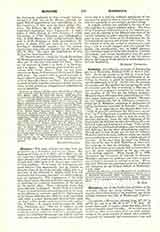

Minkelers, JEAN-PIERRE, inventor of illuminating gas; b. at Maastricht, Holland, 1748; d. there July 4, 1824. At the age of sixteen, in 1764, he went to Louvain, where he studied theology and philosophy at the College du Faucon, in which he became professor of natural philosophy in 1772. At this time the question of aerostats and Montgolfiers was occupying the mind of scientists, and the Due d’Arenberg, a Maecenas of science and art, engaged a committee to examine into the question of the best gas for balloon purposes. Minkelers was on this committee, and published in 1784, after many experiments, a work entitled “Memoire sur fair inflammable tire de differentes substances, redige par M. Minkelers, professeur de philosophie au college du Faucon, universite de Louvain” (Louvain, 1784). As an appendix to this memoir there was a “Table de gravites specifiques des differentes especes d’air”, by T. F. Thysbaert, a member of the committee. In his memoir Minkelers tells us how he made his precious discovery: from the very beginning of his experiments he had had the idea of enclosing oil in the barrel of a gun and heating it in a forge. Under action of the heat the oil dissolved and gave place to a remarkably light gas, having other advantageous qualities. Having proved that oil gas was the best for balloons, Minkelers used it for many balloons which rose rapidly and travelled great distances in the neighborhood of Louvain. As we learn from his pupil von Hulstein, who was in his class in 1785, Minkelers at times used this same gas to light his workshop. Moreover, the drift of his memoir proves clearly that in its inventor’s eyes the great combustibility of the gas was one of its leading qualities. When Joseph II, in 1788, transferred the University of Louvain to Brussels, Minkelers continued as professor, but when it was removed back to Louvain he refused to return. He resigned in 1794 and was appointed professor of physics and chemistry at the Central School of Maastricht, July 4, 1824.
D. NYS

